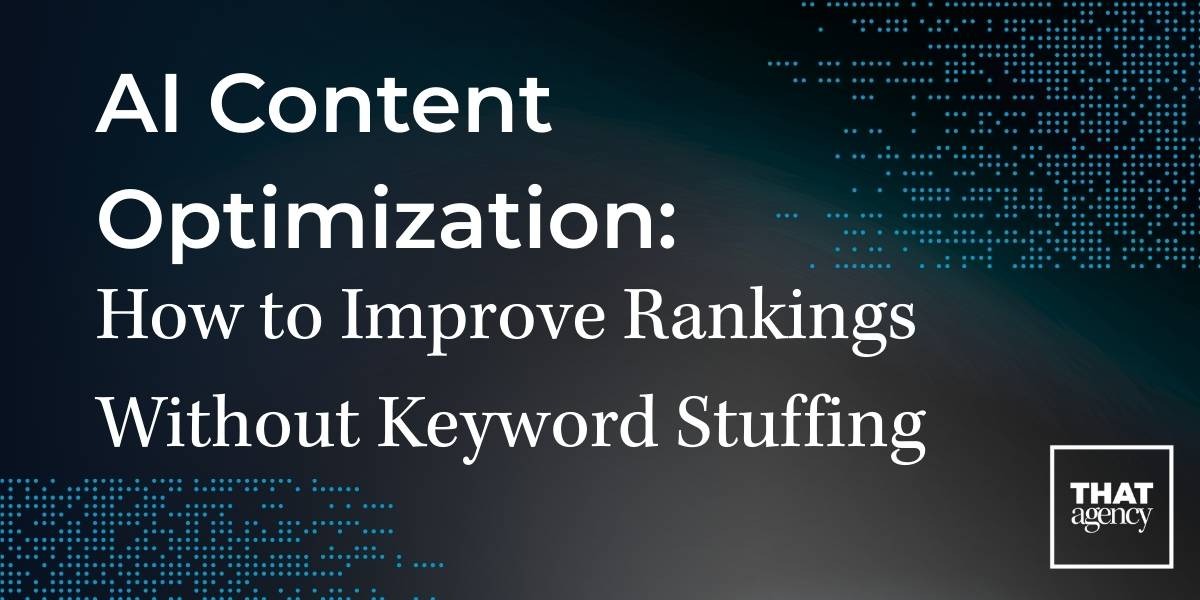Wondering how to do SEO writing right? Even as a Content Strategist tasked with SEO writing for THAT Agency, I find myself wondering the same thing. If Google isn’t changing the character length on meta descriptions (and then changing it back), the search engine giant is rolling out algorithm changes like mobile-first indexing.

So how do I stay on top of the latest on-page SEO techniques? Other than keeping my finger on the pulse of the industry by turning to leading SEO resources like Moz, Search Engine Land and the beast itself, Google, I do the following:
1. Give Each Page a Strong Title
A strong page title should be one of the most important on-page SEO techniques in your arsenal. Each page and blog post should have a unique title, ideally one containing the focus keywords and phrases for which you want appear in the search results. When it comes to blog posts, you get bonus points if your page title answers a question or solves a problem for your target audience.
For example, you could write a blog post about different methods for on-page SEO. Since ‘on-page SEO’ is at the core of the topic, it is essential for you to include ‘on-page SEO’ within your blog post title. However, ‘on-page SEO’ could be too short of a keyword phrase, meaning it might be extremely competitive and difficult to rank for. Alternatively, you could expand your keyword phrase to something more specific, like ‘on-page SEO techniques’ or even ‘basic on-page SEO tips.’
As for positioning your expanded keyword phrase to answer a question or solve a problem, you could title your blog post ‘Basic On-Page SEO Tips for Beginning Bloggers.’ That way, you’ve targeted an audience (i.e., beginning bloggers) and solved their problem of how to do SEO on a page.
2. Use Heading Tags Strategically
When writing blog posts and other long-form online texts, you should break up your content into smaller paragraphs to make it easier for people to read and digest. Typically, these paragraphs end up naturally falling into sections that can be assigned heading tags like H2, H3, H4, etc.
Search engines look at heading tags to decide what is important in your content. Therefore, headings and subheadings are prime real estate for placing keywords and phrases on a page.
3. Optimize the Meta Description
Since Google is the search engine of choice for most target audiences, Google sets the pace for SEO writing -- and meta descriptions are no exception. As of today's date, Google has limited its meta descriptions to about 155 characters, so I stick to this length.
But, regardless of Google's current character limit, make sure you include each page's focus keywords and phrases in its meta description, because these descriptions populate the search results.
4. Assess Keyword Density
The days of keyword stuffing are long gone. While it's important to use relevant keywords and phrases throughout your content, try not to overuse them. Excessive keyword repetition not only sounds unnatural, but it can harm your site's ranking.
Google recommends you focus on creating useful, information-rich content that uses keywords appropriately and in context. A good rule of thumb is to try to keep your keyword density to approximately 2-5%.
5. Add Internal Links
While internal links aren’t as powerful as backlinks to your site from other authoritative domains, internal links can give web page search engine rankings a boost. Plus, internal links are necessary for getting your site indexed.
There are several ways to improve your internal linking structure, but the main methods are through content links and permanent navigation links. As a Content Strategist, I'm usually focused on adding content links (go figure).
When placing content links, try to avoid hyperlinking nondescript words and phrases like 'click here.' Instead, pick out the keywords and phrases for which you want to rank, and hyperlink those terms.
In other words, choose your anchor text wisely. To get the best results, SEO-friendly anchor text should be concise and pertinent to the page to which it's linking.
6. Take Advantage of Image Alt Text
They say a picture is worth a thousand words. When it comes to SEO, image alt texts are where some of those words should live (especially keywords).
Since Google scans image alt texts to evaluate context, treat those alt texts the same as your content by including relevant keywords and phrases for which you want to rank.
Now, I'm not saying you should cram keywords into every image's alt text. Just pick one high-quality, related image where it makes sense to have the focus keyword or phrase appear in the alt text.
By applying these on-page SEO techniques, you can learn how to do SEO writing right ... at least for right now. Inevitably, Google will make changes. The key is to be ready to adapt whenever Google shakes things up.





